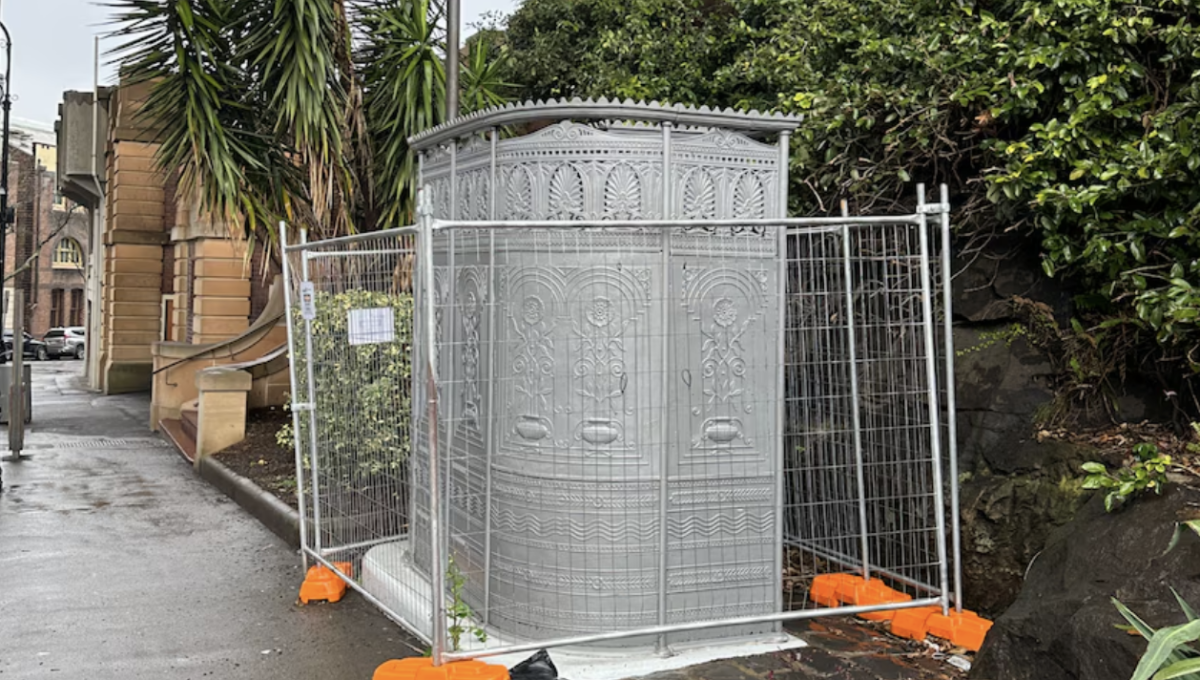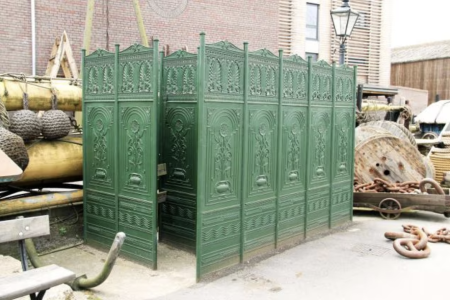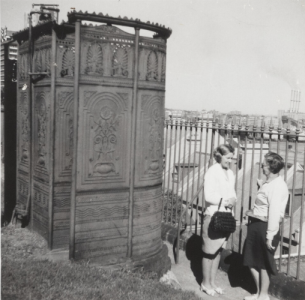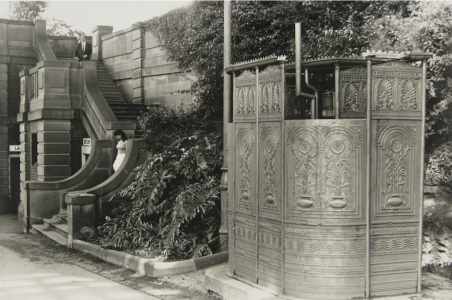
When you think of the types of buildings and places that make it onto Australia's heritage listings, you probably imagine large Victorian houses, parliamentary buildings and national parks.
But tucked away on George Street, Dawes Point, is one of Sydney's most unexpected heritage-listed sites: a cast-iron urinal.
This "pissoir" (yes, that is what it's called; it's French) is one of Australia's oldest, and in the humble opinion of yours truly, one of its most beautiful.
But age and beauty don't automatically qualify you for heritage protection. So how did this piece of plumbing achieve such a status?
Scottish design, Sydney landmark
Sydney Council has provided public toilets since 1880, but the George Street pissoir began life across the globe in Glasgow.
The James Allen Snr & Son's Elmbank foundry specialised in all manner of cast iron public fittings: drinking fountains, railings, bandstands and verandahs — they did it all.
B G Plummer & Co Sydney supplied the George Street urinal to the Sydney City Council in 1911 — possibly having cast it from moulds by James Allen Snr & Son's design.

But it's not its exotic origin that makes this pissoir historically significant.
Toilets as social history
"Public toilets matter because they reflect how we value people and their human rights to water and sanitation," public toilet researcher and advocate Katherine Webber says.
"[They're] part of the history of our public spaces, and of whose rights were promoted and facilitated in public spaces."
In the 1880s, Sydneysiders were fed up with the lack of public facilities. Men were urinating in the street, and women — well — women had to hold it.

"With industrialisation and the need to work out of the home, women, alongside men, have been using our public spaces and participating in public life," Webber says.
"However, there have been class and racial differences in the women who have been 'allowed' to be seen or acknowledged participating in public life."
As historian Anna Temby points out, the main barrier to installation for public toilets (aside from finances) has been the question of where to put them.
On one hand, public toilets need to be in convenient and safe locations. But on the other hand, there has always been strong community resistance to installation of toilets — especially female toilets — in visible areas.
"While the municipal councils built numerous facilities for men, there was public debate about the impact [of] the provision of toilets for women," Ms Webber says.
"These included that public toilets for women would lower property prices … increase congestion on the footpaths, despite there already being urinals in the same location, and cause traffic accidents."
Subversive spaces
While women have been battling for a place to piss for over a century, male urinals were not without their own PR crisis in the 20th century.
Long being known as hot spots for drug use, sex work and as gay beats, male public toilets were seen as spaces that encouraged subversive and even criminal activity.
"Across Sydney, some public toilets have been a key location that have meaning for the gay community, with some activists and academics calling for their preservation to capture their historical significance of gay pride," Ms Webber says.
"They have been used as beats, public toilets known for homosexual pick-up sex, but also the sites of police entrapment and brutality."

Saved from the scrap heap
Although protected and conserved today, the pissoir on George Street was almost lost to the scrap heap.
In 1971 it was dismantled and removed from its original location in Observatory Park, but — after a strong campaign from heritage-minded locals and public-toilet enthusiasts — it was saved and moved to its current location under Sydney Harbour Bridge.
"The urinal was listed as a locally significant heritage item in 2012," a City of Sydney spokesperson says, and it remains "a tangible reminder of the council's long history of providing public amenities in Sydney".
Toilets as art?
Although you won't see many council-issue public toilets as elegantly decorated as this one today, design is just as important as ever when it comes to public amenities.
When asked how she rates the George Street pissoir, Ms Webber praises the cast-iron design's beauty, and says it's a shame these details are lost in current public toilet design.
"I love a public toilet that incorporates public art or reflects the local environs," Webber says.
"By being attractive, a public toilet can make people feel like it is designed for them to use and also to care for. The built environment contains cues on how to behave.
"People are not going to want to keep a space clean that doesn't look clean to begin with, that is not well-maintained, that looks and feels institutional."
Everyday beauty
Although it's just a urinal, Sydney's George Street pissoir is a remnant from an era when even the most base and unsavoury things were considered worthy of beautification.
Unfortunately, today it is temporarily fenced and not usable for its original purpose — can't have blokes taking a leak on a historical artefact!
But fear not! If you ever find yourself in Millers Point, fresh off a Sydney Harbour Bridge climb and in need of a whiz, a fully equipped public toilet is right next door with male, female, unisex, baby change and accessible facilities for all.
Written by: Mary McGillivray, ABC News.





